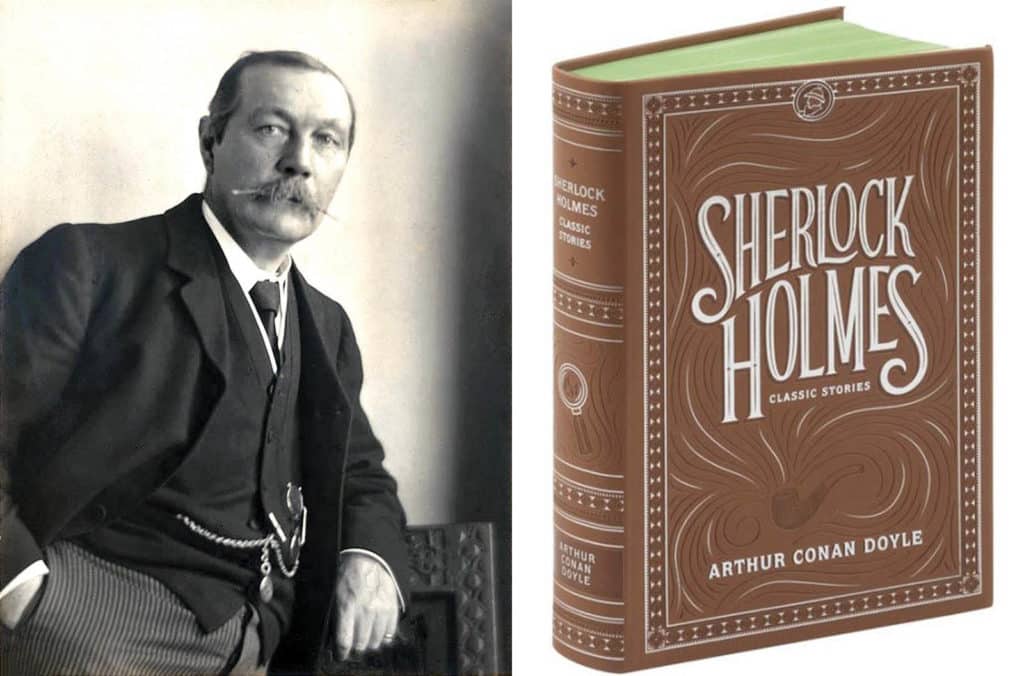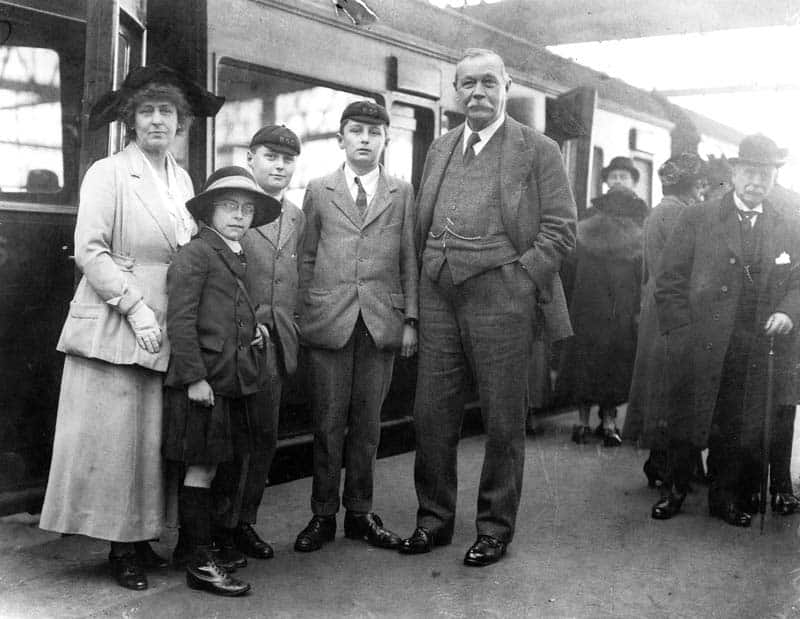
“It’s elementary, my dear Watson.” Those words by Sherlock Holmes, Arthur Conan Doyle’s most beloved character, are ingrained in the literary conscience, right up there with “April is the cruelest month,” “You can’t go home again” and “Catch-22.”
Holmes’ creator was a Scotsman who perfected the mystery novel. As with Charles Dickens, Arthur Conan Doyle—who would have been 160 this past May—had the good fortune to live and work during Great Britain’s long Indian summer of world dominance. The British novel was the gold standard in literature and Doyle’s popular tales of intrigue and suspense uplifted that genre considerably.
Doyle was born in Edinburgh to parents of Irish Catholic descent. His father succumbed to alcoholism, which left Mrs. Doyle and her children destitute. The family settled in Lancashire, where the young Doyle was supported by wealthy uncles. Watching his father fail undoubtedly affected Doyle. He was determined to be a success. Toward that end, he was the recipient of a first-class education at Jesuit schools in both England and Austria. Doyle took the safe route, studying to become a physician. But the writing bug hit at an early age. By the time he was 20, Doyle had already published his first short story. Many more were on the way.
They had to be. Doyle began his medical career as a surgeon for the British Royal Navy. Following that, he set up private practices in both Portsmouth, Southsea in London. In the British capital, Doyle worked as an ophthalmologist. None of his practices were very successful. Lacking patients, Doyle turned to writing fiction. Fortunately for the hard-luck doctor, the muse delivered Sherlock Holmes. Doyle wrote his first Holmes novel, A Study In Scarlet, during a three-week writing binge in 1886, when the author was 27. The novel enjoyed national distribution and received good reviews in the mainstream press. Doyle’s career as a novelist and short story writer was underway.
The team of Sherlock Holmes and Dr. John Watson revolutionized the mystery novel. The unlikely pair steadfastly worked their way through case after case, never giving up hope and confronting life’s difficulties with good cheer. It perfectly fit the British ethos of the 19th century.

All fiction is autobiographical or at least, the dramatization of real life people and events. Holmes was inspired by Joseph Bell, a teacher of Doyle’s from his university days in Edinburgh. As with popular authors of his day, Doyle’s fiction was serialized by periodicals before making their way into book form. The Sherlock Holmes character was a sensation. His creator, however, grew tired of the man. Within five years of introducing him to the British reading public, Doyle was ready to kill off Holmes. “I think of slaying Holmes…and winding him up for good…He takes my mind from better things,” the novelist wrote his mother in 1891. Mrs. Doyle strenuously objected to her son’s idea. The novelist went ahead as planned, sending Holmes to his death in an 1893 short story. The British public, too, objected and Doyle was forced to bring the inscrutable detective back to life. If Doyle was stuck with Sherlock Holmes, the least he could do was make money off of him; which Doyle succeeded in doing. He raised the prices publishers would pay for a new Holmes tale. Doyle originally thought that would discourage publishers, allowing him to finish off Holmes. The opposite happened. Publishers were willing to pay more for each new Holmes story. The novelist knew a winning card when he had one.
Doyle was a versatile man. An accomplished athlete, he played football as a goalkeeper for Portsmouth Association Football Club, while starring as a star cricketer for the Marylebone Cricket Club. In fact, Doyle excelled at every sport he tried. He was an amateur boxer, who considered refereeing the 1909 James Jeffries–Jack Johnson heavyweight championship fight. A competitive golfer, Doyle was elected captain of the Crowborough Beacon Golf Club in Sussex. As with, say, Ernest Hemingway and prize fighting, fishing and hunting or John Updike and the latter’s own daily game of golf, Doyle happily combined the life of the mind with physical exercise.
Doyle’s fame occasionally took him away from the fiction patch and into politics. He wrote two books defending Britain’s involvement in the turn-of-the-century Boer War between that island nation and South Africa. He twice stood as a candidate for Parliament as a candidate for the Liberal Unionist Party. Still a licensed physician, Doyle dabbled in freemasonry and spiritualism. He fathered five children with two wives. Late in his life, he designed mansions, temples and golf courses. Was there anything Sir Arthur Conan Doyle couldn’t do? The man was bored with Sherlock Holmes, but that beloved character was the key to a long and eventful life for his creator. And that’s elementary, as anyone can see.


















